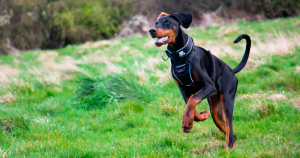National Check the Chip Day

Since the 1980s, the chip has ensured our dogs’ health and safety if, god-forbid, they ever got lost. Even though the chip has become a standard form of ID-ing our dogs, it’s not a given when we’re adopting or responsibly shopping for a new canine family member. Today is National Check the Chip day and we want to give you all of the information you need to know about chipping, as well as other ways to keep track of your pup, especially if they are labeled a “runner” or “door dasher” at doggie daycare.
How do I know if my dog is chipped?
These days, most dogs are chipped before adoption, and the shelter or breeder will give you their chip information along with their adoption information, that way new pet parents can go online to the microchip database and register their contact information if their dog were to ever get loose. If your dog was not chipped before you adopted them, talk to your vet and they can chip them at their next visit. It’s super easy and then you have that peace of mind right away. The chip will stay with them their whole lives and is so small and won’t disrupt their health in any way. Nearly 100% of vets, according to the AVMA, recommend getting your dog microchipped, as there are no health concerns associated with chipping.
What are alternatives to chipping?
While chipping your dog is an international way to assure your dog would be ID-ed if they got loose, collars and local ID tags are critical to ensuring your dogs safety. Most times when dogs get loose, they are just taking a spin around the neighborhood. Collars and ID tags are the fastest way for your dog to be returned to you in those circumstances, since your address and phone number are right there. Chipping is most helpful in times when your dog is truly lost, but in little day to day escapes, collars and ID tags are your best bet. You can also get an external tracker like an Apple Air-tag to put on your dog’s collar for added protection. Chips don’t track your dog’s real time location, Air-tags can be a great option to see where your dog has run off to if they do ever get loose.
What if my dog gets loose?
First, let us say, sometimes this happens, and it’s not a referendum on your abilities as a pet parent. Dogs are curious animals and sometimes they see an open gate or door as an invitation for adventure. While, ideally, your dog is wearing their collar with ID tags attached, we know this isn’t always the case, but either way, the first thing to remember is not to panic. Before you go out looking for your dog and shouting their name, think of their temperament. Most loose dogs, will not come back just by being called so grab some treats and enlist some help, either from family or neighbors. Walk or drive around routes you usually take in your neighborhood since your dog is familiar with those and likely to stick to what they know. If after some time searching they’re still on the lam, call your local humane society to let them know. Sometimes they can send someone to help in the search, but at least they know to look out for your dog if someone else calls or turns them in. If your dog is still missing after a few hours, post on facebook or local message boards so people can keep an eye out for them as well.
Our dogs getting loose is, often, our worst nightmare, and after a certain point of them missing, there isn’t a ton to be done. That’s why chipping, collars, ID tags, and Air-tags are so important for our dog’s safety. They are a part of our families, and we always want to do what we can to keep the family together.


